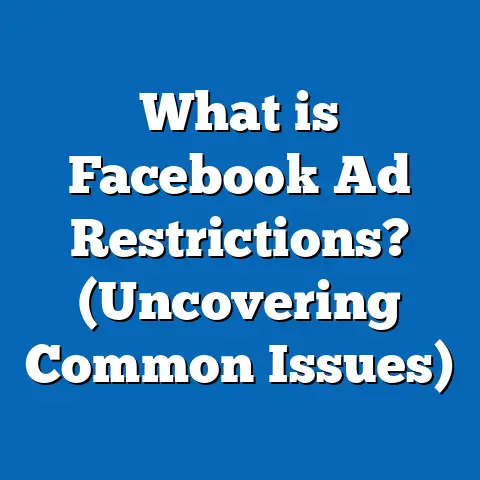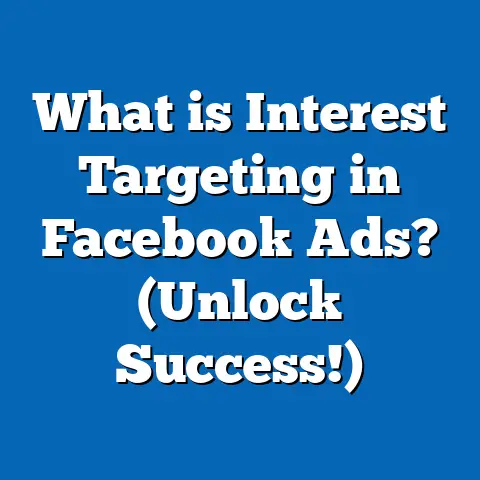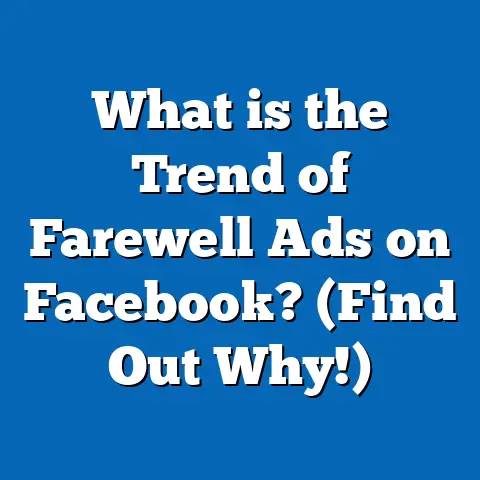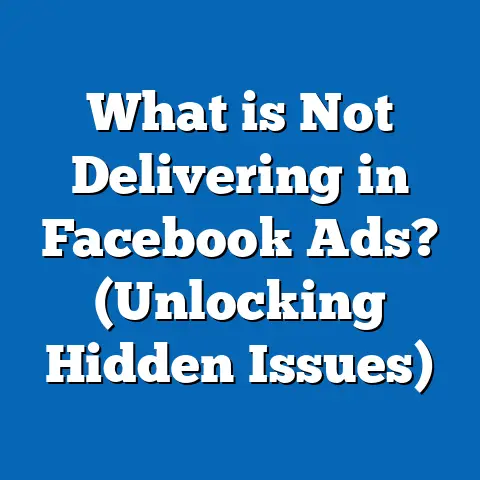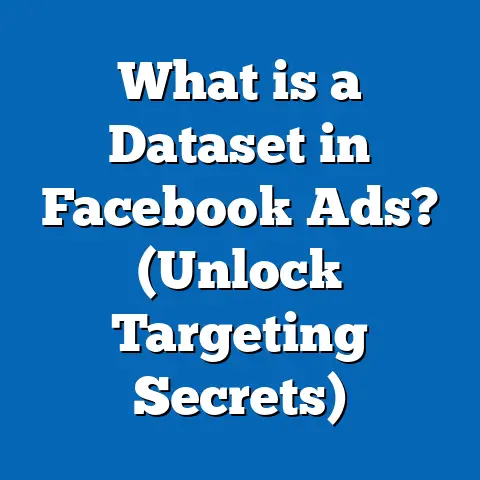What is Facebook Ads Payment? (Unlocking the Secrets)
What is Facebook Ads Payment? (Unlocking the Secrets)
Introduction: Are You Spending Wisely on Facebook Ads?
How much time do you spend managing your Facebook ads budget? Are you confident every dollar invested brings measurable returns? In the fast-paced world of digital marketing, understanding Facebook Ads payment systems can save you both money and headaches. If you want to optimize your advertising spend and truly unlock the potential of Facebook ads, it’s crucial to grasp how payments work behind the scenes.
Facebook advertising is one of the most powerful tools for businesses of all sizes. However, despite its popularity, many advertisers struggle with managing payment settings effectively. This results in overspending, delayed campaigns, or unexpected charges that eat into your profitability. This guide will take you through everything you need to know—from payment basics to advanced budget control strategies—to make your Facebook ad payments smooth and efficient.
Understanding Facebook Ads Payment: The Basics
What Are Facebook Ads Payments?
Facebook Ads payment is the method through which advertisers pay for the exposure and engagement their ads receive on Facebook’s platforms—this includes Facebook itself, Instagram, Messenger, and Audience Network.
When you run an ad on Facebook, you do not pay upfront for the entire campaign. Instead, Facebook operates on a billing system that charges advertisers based on actual ad performance and spending thresholds. This pay-as-you-go model helps businesses control budgets and get billed only for what they use.
How Does Facebook Charge Advertisers?
Facebook uses a sophisticated auction-based system where advertisers compete to show their ads to specific target audiences. Your ad’s cost depends on several factors:
- Bidding Strategy: You decide how much you are willing to pay for clicks, impressions, or actions.
- Auction Competition: More advertisers targeting the same audience typically drive up costs.
- Ad Relevance Score: Higher quality and relevance ads cost less per engagement.
- Target Audience Size: Narrower audiences can be more costly due to competition.
- Ad Placement: Costs vary by where your ads appear (feed, stories, sidebar).
Types of Payment Models
- Cost Per Click (CPC): You pay when someone clicks your ad.
- Cost Per Mille (CPM): You pay per 1,000 ad impressions.
- Cost Per Action (CPA): You pay when a user completes a specific action like signing up or purchasing.
- Cost Per Like (CPL): Mainly for page likes or post engagements.
- Cost Per View (CPV): Common in video ads where you pay per video view.
Each payment model fits different campaign goals and budgeting preferences.
Key Payment Methods and Billing Options
Facebook supports various payment methods depending on your country:
- Credit cards: Visa, MasterCard, American Express.
- Debit cards.
- PayPal.
- Direct debit or bank transfers (in select countries).
- Facebook ad coupons or credits (occasionally provided as promotions).
You can set a primary payment method and add backup methods to avoid campaign pauses if one fails.
Setting Up Your Facebook Ads Payment System: Step-by-Step Guide
Step 1: Access Facebook Business Manager
Business Manager is the centralized dashboard where you manage your ad accounts, campaigns, pages, and payments. If you don’t have one, create a Business Manager account at business.facebook.com.
Step 2: Add a Payment Method
Navigate to Payment Settings under Business Manager:
- Click “Add Payment Method.”
- Choose your preferred payment option.
- Enter billing details such as card number, expiration date, and billing address.
Facebook encrypts this data securely.
Step 3: Set Billing Thresholds
Facebook allows you to set billing thresholds that trigger when you get charged. For example:
- If your threshold is $100, Facebook charges your card once your ad spend reaches that amount.
- If you don’t reach the threshold within a month, you get billed at the end of the billing cycle.
This system spreads out charges rather than billing large amounts at once.
Step 4: Currency Settings and Tax Information
- Facebook bills you in your local currency if supported.
- You may need to provide tax identification information depending on your location.
- VAT or sales tax may be added to invoices.
Deep Dive: How Does Facebook Calculate Your Ad Spend?
Auction Dynamics and Cost Determination
Every time Facebook delivers an ad impression or click, it runs an auction considering:
- Your bid amount.
- Estimated action rates (likelihood of user engagement).
- Ad quality and relevance score.
- Competitor bids.
Facebook aims to maximize total value for both advertisers and users. Thus, even if you bid high, a low-quality ad may not win the auction or could cost more due to inefficiency.
Understanding Relevance Score and Its Impact on Costs
Relevance score is a metric from 1 to 10 indicating how well your ad matches its target audience. Higher scores mean:
- Lower costs per click or action.
- Higher ad delivery rates.
- Better audience engagement.
Example: An ad with a relevance score of 9 may cost 20%-30% less per click than one scoring 4.
Billing Thresholds in Detail: Why They Matter
Billing thresholds allow advertisers to control how often they are charged. Smaller thresholds mean more frequent billing but smaller charges each time. Larger thresholds reduce transaction frequency but can lead to bigger charges that might impact cash flow.
Example:
| Billing Threshold | Impact |
|---|---|
| $50 | Charged more frequently; easier cash flow management |
| $500 | Fewer charges but larger single payments |
Data-Backed Insights: Real Industry Statistics
According to recent studies:
- Over 10 million businesses use Facebook Ads worldwide.
- The average CPC across industries ranges from $0.20 to $3.77 depending on sector.
- Retail averages around $0.70 CPC; finance sectors pay the highest CPC (~$3.77).
- Advertisers optimizing billing thresholds and payment methods see up to 30% fewer payment failures.
- According to WordStream, Facebook Ads average CTR (click-through rate) is about 0.9%.
Case Study: E-commerce Brand Optimizes Payment Strategy
Company X spent $10,000 monthly on Facebook ads. Initially:
- Billing threshold was $50.
- Used PayPal for payments.
Issues faced:
- Multiple small charges caused PayPal processing delays.
- Campaign interruptions due to failed payments.
Actions taken:
- Increased billing threshold to $200.
- Switched to credit card payment method.
Results after three months:
- Transaction fees decreased by 40%.
- Campaign uptime improved by 25%.
- Overall ROI increased by 15% due to consistent ad delivery.
Common Challenges in Managing Facebook Ads Payments and How to Solve Them
Declined Payments and How to Avoid Them
Common reasons:
- Expired card details.
- Insufficient funds.
- Bank restrictions on international transactions.
- Suspicious activity flagged by banks.
Solutions:
- Regularly update payment methods.
- Use reliable credit cards with sufficient limits.
- Enable notifications for upcoming expirations or failed payments.
- Contact your bank about international charges from Facebook.
Billing Disputes & Resolving Overcharges
Sometimes advertisers notice unexpected charges due to:
- Duplicate charges (rare).
- Click fraud (clicks generated by bots or competitors).
- Issues with campaign setup causing rapid overspending.
Facebook provides detailed billing summaries showing when charges occurred and why. Use Ads Manager’s reporting features to analyze spend by campaign and date.
If disputes arise:
- Contact Facebook support promptly with transaction details.
- Provide evidence such as campaign reports showing discrepancies.
- Monitor account closely after resolution.
Managing Multiple Accounts & Consolidated Billing
For agencies or companies with multiple clients/accounts:
- Use Business Manager’s consolidated billing feature.
- Assign different payment methods per client if needed.
- Receive a single invoice for multiple accounts monthly for easier bookkeeping.
Advanced Concepts in Facebook Ads Payment Management
Leveraging Automated Rules for Spending Control
Automated rules can help pause campaigns or notify you when spending reaches limits. For example:
- Pause campaigns if daily spend exceeds $50 unexpectedly.
- Alert when total monthly spend approaches budget caps.
This reduces risk of overspending due to errors or sudden changes in campaign performance.
Using Bid Caps and Cost Controls Effectively
Bid Caps allow you to set maximum bids in auctions so you never pay above a certain amount per click or action.
Cost Controls enable targeting specific average costs per result without exceeding budgets.
Proper use helps maintain predictable costs aligned with ROI goals.
Understanding Payment Security Features
Facebook uses encryption protocols such as TLS/SSL for payment data transmission. It also employs fraud detection algorithms that monitor suspicious activities like unusual payment attempts or rapid spending spikes.
Advertisers should enable two-factor authentication (2FA) on their accounts for enhanced security against unauthorized access.
Comparing Facebook Ads Payment with Other Advertising Platforms
| Feature | Facebook Ads | Google Ads | LinkedIn Ads |
|---|---|---|---|
| Payment Methods | Credit cards, PayPal, Direct Debit | Credit cards, bank transfer | Credit cards only |
| Billing Thresholds | Yes | Yes | No |
| Currency Options | Multiple local currencies | Multiple local currencies | Limited currencies |
| Auction Model | CPC, CPM, CPA | CPC, CPM, CPA | CPC, CPM |
| Fraud Prevention | Strong | Strong | Moderate |
| Invoice Frequency | Threshold-based or monthly | Threshold-based or monthly | Monthly |
Facebook’s payment system is flexible with global reach. Google Ads offers similar features but has more strict verification processes for some advertisers. LinkedIn’s system is simpler but less versatile in billing options.
Practical Examples of Payment Management in Real Businesses
Example 1: Small Business Owner Setting Budget Limits
Jane runs a boutique clothing store with an ad budget of $500 monthly. She sets her billing threshold at $100 so she gets charged in manageable increments four times a month. She uses credit card payments for instant processing and sets automated rules to pause campaigns if daily spend exceeds $20 unexpectedly.
Example 2: Agency Managing Multiple Clients
A marketing agency manages five client accounts via Business Manager. Each client has separate budgets and payment methods assigned. The agency uses consolidated billing to get one invoice covering all clients monthly while maintaining transparent individual client spend reports.
Latest Trends in Facebook Ads Payment Systems (2024 Update)
Enhanced Payment Analytics Dashboards
Facebook recently launched upgraded dashboards providing detailed insights into payment history, transaction breakdowns by campaign, and forecasting tools based on historical spend patterns.
Integration with Financial Software
Improved APIs now allow direct integration with accounting platforms like QuickBooks and Xero for seamless bookkeeping and reconciliation of ad expenses.
Cryptocurrency Payments Pilot Programs
In select regions, Facebook is testing crypto-based payment options allowing advertisers to pay using Bitcoin or Ethereum wallets—aimed at markets with limited credit card penetration.
AI-Powered Fraud Detection Improvements
New AI models reduce false positives in fraud detection by over 25%, minimizing unnecessary account holds while protecting against genuine threats.
Technical Glossary: Simplifying Key Terms
| Term | Simple Explanation |
|---|---|
| Cost Per Click (CPC) | Pay when someone clicks your ad |
| Cost Per Mille (CPM) | Pay per 1,000 ad impressions |
| Cost Per Action (CPA) | Pay when a user completes a desired action |
| Billing Threshold | Spending limit before Facebook charges your account |
| Relevance Score | How well your ad matches its audience |
| Bid Cap | Maximum amount you’re willing to pay per auction |
| Automated Rules | Settings that pause or alert based on spend limits |
| Business Manager | Dashboard for managing ads and payments |
Frequently Asked Questions (FAQs)
How often will Facebook charge my payment method?
Charges occur when your spending hits your billing threshold or at the end of the monthly billing cycle—whichever comes first.
Can I change my billing threshold?
No, billing thresholds are set by Facebook based on account history and spend levels but can increase automatically over time with consistent good payment history.
What happens if my payment method fails?
Facebook pauses your campaigns until you update payment info. You have a grace period to fix issues before ads stop running permanently.
Are there any hidden fees?
Facebook does not charge extra fees beyond your ad spend but taxes like VAT may apply depending on your country’s regulations.
Summary: Key Takeaways About Facebook Ads Payment
- Understand different payment models — CPC, CPM, CPA — choose based on campaign goals.
- Set appropriate billing thresholds aligned with your cash flow preferences.
- Keep payment methods updated to avoid service interruptions.
- Use automated rules and bid controls to manage spend efficiently.
- Leverage Business Manager’s consolidated billing if managing multiple accounts.
- Stay updated on new features such as crypto payments and enhanced analytics dashboards.
Mastering these aspects will help you avoid common pitfalls, safeguard your budget, and boost your advertising effectiveness on Facebook’s platform.

